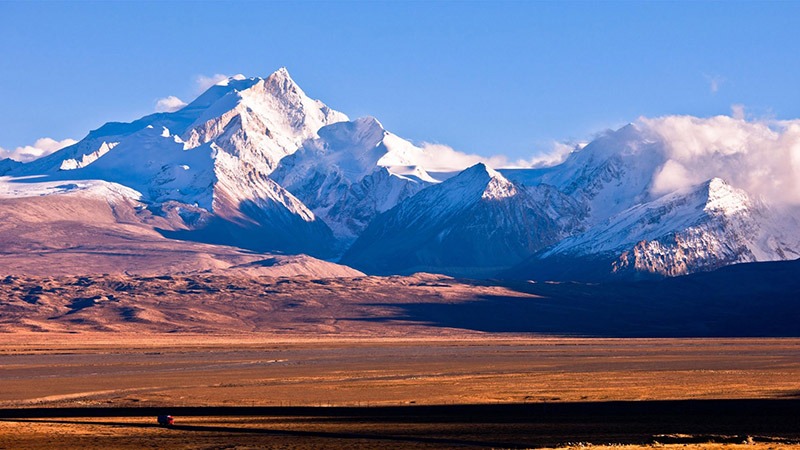
The Highest Mountains In Iran
Iran has stunning mountain ranges with tall peaks offering breathtaking views and exciting adventures. Iran’s varied landscape is packed with natural marvels, like some of the tallest mountains around. These mighty peaks have always captivated adventurers and climbers, beckoning them to explore Iran’s stunning and remote scenery.
Continue reading to uncover Iran’s tallest mountains and their impact on the nation’s geography and culture.
Explore the roster of Iran’s towering peaks:
Damavand – 5,671 meters (18,606 feet)
Sabalan – 4,811 meters (15,784 feet)
Alam Kuh – 4,848 meters (15,906 feet)
Zard Kuh – 4,548 meters (14,921 feet)
Dena – 4,409 meters (14,465 feet)
Taftan – 3,941 meters (12,930 feet)
Bazman – 3,485 meters (11,434 feet)
The Highest Mountains In Iran
1. Damavand Mountain
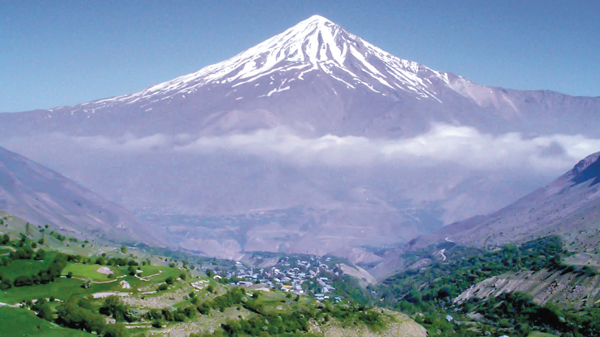
Rising majestically to 5,671 meters (18,606 feet), Mount Damavand reigns as Iran’s loftiest peak and Asia’s highest volcano. Nestled in the Alborz mountain range northeast of Tehran, this iconic stratovolcano holds profound significance in Persian heritage. Its snow-capped summit, a prominent fixture in Iranian literature, art, and folklore, stands as a timeless emblem of natural grandeur and cultural pride.
Damavand is deeply woven into the fabric of Iranian mythology and folklore, symbolizing strength, resilience, and national identity. Revered in ancient Persian texts like the Shahnameh by Ferdowsi, this majestic peak is steeped in mythical tales of heroic deeds. It is imbued with mystical significance and celebrated in Persian literature as a beacon of defiance against oppression.
In addition to its cultural importance, Damavand is a renowned hotspot for climbers and adventurers from around the globe. With routes tailored to various skill levels, the mountain entices mountaineers eager to tackle its formidable slopes. Ascending Damavand promises an exhilarating journey through a range of landscapes, from verdant valleys below to rugged volcanic terrain above.
The area around Damavand is a treasure trove of natural wonders, featuring enchanting hot springs, meadows brimming with colorful wildflowers, and a rich variety of plant and animal life. Moreover, the quaint villages and towns nearby epitomize the warmth and hospitality of the locals, providing a charming insight into the traditional way of life beneath the grandeur of this majestic peak.
Due to its status as the tallest peak in Iran and an active volcano, Damavand is closely observed by scientists for its geological significance. Despite no recorded eruptions in history, the possibility of activity only adds to the allure of this magnificent natural marvel.
2. Sabalan Mountain
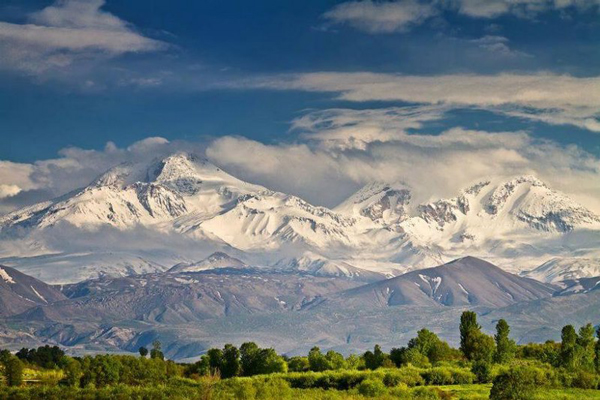
The second highest mountain in Iran, Sabalan Mountain, soaring to approximately 4,811 meters (15,784 feet), is a notable stratovolcano nestled in northwestern Iran, close to the city of Ardabil. This volcano, which may still be active, is renowned for its stunning scenery and geological importance in the area.
Sabalan Mountain carries cultural importance in local folklore and traditions. Its name, stemming from the Persian word “savalan,” translates to “water and patience.” Stories and legends about the mountain are woven into the fabric of indigenous Azerbaijani folklore. At its summit lies the revered crater lake called “Gol-e-Gavmish,” believed to possess healing properties. Pilgrims and travelers frequently journey to this sacred lake, seeking its reputed therapeutic qualities.
Sabalan Mountain boasts a diverse landscape, showcasing a blend of natural wonders. Its terrain encompasses lush forests, alpine meadows, and rugged volcanic expanses. In spring and summer, vibrant wildflowers adorn the slopes, enhancing the mountain’s captivating beauty.
For adventure enthusiasts and climbers, Sabalan provides a range of trekking and climbing routes suitable for all skill levels. One of the most favored paths to the summit starts from the Shabil Hot Springs, guiding climbers through stunning landscapes and diverse ecosystems.
The volcanic past of Sabalan has left its mark on the surrounding terrain, enriching the area with fertile valleys and natural hot springs. Scientists closely monitor the mountain for any signs of volcanic activity, making it an intriguing subject of study for geologists and researchers.
The volcanic past of Sabalan has left its mark on the surrounding terrain, enriching the area with fertile valleys and natural hot springs. Scientists closely monitor the mountain for any signs of volcanic activity, making it an intriguing subject of study for geologists and researchers.
Furthermore, Sabalan’s proximity to Ardabil, a city renowned for its historical importance, enhances the cultural aspect of the visit. Ardabil features attractions such as the UNESCO-listed Sheikh Safi al-din Khanegah and Shrine Ensemble, providing additional depth to the exploration of Sabalan.
3. Alam Kuh Mountain

Alam Kuh Mountain, nestled within the Alborz mountain range of northern Iran, commands attention with its imposing stature, reaching a majestic height of about 4,848 meters (15,906 feet). Affectionately dubbed the “Flag Mountain” for its unique rocky pinnacle resembling a flag, Alam Kuh holds a cherished spot in the hearts of Iranians.
Alam Kuh sets itself apart from its neighboring peaks with its bold and rugged terrain, providing a formidable challenge for mountaineers and climbers. Its steep and rocky faces, combined with unpredictable weather conditions, create a demanding and technically challenging ascent. Those enticed by this peak are driven by the thrill and prestige of conquering its formidable north face, famously known as the “German Flank.”
Alam Kuh holds a revered place in Iranian culture, evoking feelings of national pride and admiration. Its name resonates through Persian literature and folklore, immortalized in classical poetry, where its majestic stature symbolizes resilience and strength.
The area around Alam Kuh offers a stunning natural canvas, showcasing a range of landscapes that unfold like a masterpiece. From vibrant valleys bustling with life to the icy glaciers crowning its summit, the mountain presents a diverse array of natural marvels. As you ascend, you’re treated to a captivating transformation, transitioning from lush greenery to snow-capped peaks, creating a visual symphony that enchants hikers and photographers alike.
Nestled within the Takht-e Soleyman Massif, Alam Kuh stands as a prominent draw for adventure seekers near Tehran. Its convenient location, combined with the rugged terrain it offers, beckons climbers and nature lovers alike to push their limits against its rocky cliffs and steep trails.
4. Zard Kuh Mountain
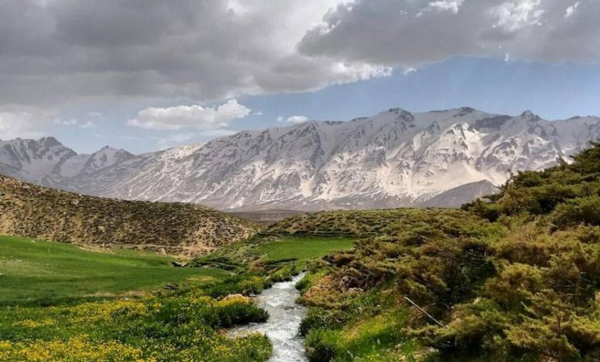
Perched majestically in the southwestern stretch of Iran’s Zagros mountain range, Zard Kuh commands attention, soaring to around 4,548 meters (14,921 feet) in height. Aptly nicknamed the “Yellow Mountain,” it owes its moniker to the golden tones that grace its slopes under the radiant sun, lending an otherworldly charm to its rugged landscape
While Zard Kuh may not reach the dizzying heights of Iran’s tallest summits, its allure lies in the mesmerizing vistas it presents. With rocky cliffs, snow-topped peaks, and lush valleys, it weaves a tapestry of natural marvels, each narrating a tale of endurance and stunning splendor.
Zard Kuh seamlessly integrates into the cultural tapestry of the Zagros region. While it may not hold the spotlight in folklore or literature like some of its counterparts, its towering silhouette forms the backdrop of local tales and customs, embodying resilience and timeless allure.
The allure of this mountain extends beyond its elevation and climbing complexities; it resides in the serene tranquility it offers to nature lovers. The paths encircling Zard Kuh call out to adventurers in search of peaceful exploration amidst its picturesque landscapes, providing an opportunity to immerse oneself in the distinctive ecosystem of the Zagros.
Being one of the tallest peaks in Iran, Zard Kuh’s setting provides a window into the unique culture and way of life in the southwestern region of the country. The surrounding villages, steeped in cultural heritage, combined with the mountain’s natural beauty, offer visitors an immersive experience like no other.
5. Dena Mountain
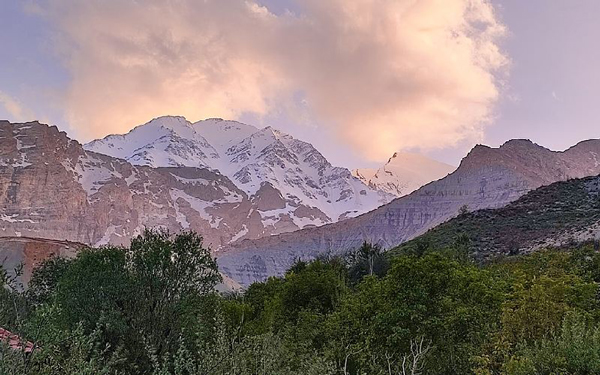
Dena Mountain reaches an elevation of around 4,409 meters (14,465 feet). Despite not being the tallest peak in Iran, Dena Mountain exudes a unique allure with its tranquil scenery, cultural importance, and the peaceful ambiance it provides to explorers seeking a distinctive mountain adventure.
The area surrounding Mount Dena offers a captivating blend of landscapes, ranging from lush valleys teeming with diverse plant life to rugged slopes leading up to snow-capped peaks. This ecological diversity supports a wealth of wildlife, drawing the interest of nature lovers and scientists fascinated by the region’s distinctive flora and fauna.
Mount Dena’s trails call out to those in search of tranquility amidst stunning scenery. These paths meander through the mountains, offering hikers a chance to find moments of peaceful contemplation and communion with the raw beauty of the land.
The mountain’s formation and distinctive characteristics pique the interest of scientists and geologists eager to unravel the mysteries of the Zagros range. Its location within this geological wonder provides insight into the intricate history and structure of this area.
Nestled in southwestern Iran, Mount Dena acts as a gateway to the cultural tapestry of its surroundings. Adjacent villages offer a peek into the traditional way of life and the welcoming spirit of local communities, enhancing the charm of delving into this enchanting mountainous terrain.
6. Taftan Mountain
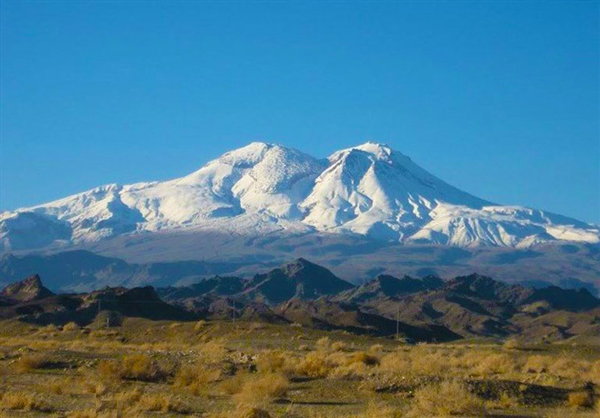
Mount Taftan is a remarkable stratovolcano, soaring to around 3,941 meters (12,930 feet) above sea level. Its distinctive features, including steep slopes formed by layers of volcanic materials, highlight its volcanic origins and geological allure.
Taftan’s stratovolcanic structure is not only visually striking but also a subject of fascination for geologists keen on uncovering the area’s volcanic past and potential activity.
The terrain encircling Taftan offers a captivating juxtaposition of rugged volcanic expanses and sporadic patches of greenery, painting a striking contrast across the landscape. Its secluded setting appeals to intrepid travelers drawn to off-the-beaten-path adventures and the allure of discovering uncharted territories.
7. Bazman Mountain
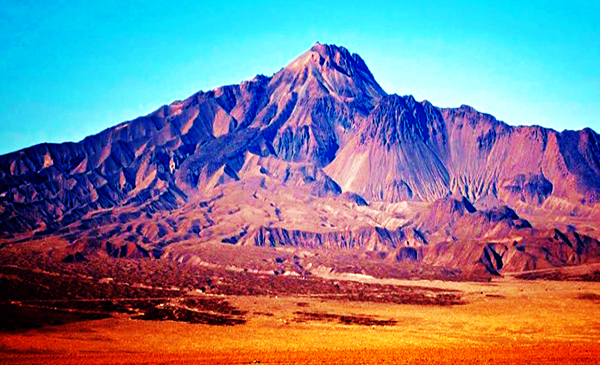
Bazman Mountain marks the final entry on our list of Iran’s highest peaks, reaching heights of around 3,485 meters (11,434 feet).
While not as widely celebrated in national folklore, Bazman holds cultural importance within local traditions, contributing to the historical and cultural heritage of the surrounding communities in the Sistan and Baluchestan region.
Bazman is renowned for its rugged yet captivating terrain, where rocky slopes intermingle with pockets of thriving vegetation in the mountain’s foothills. Though it may not rival the towering heights of Iran’s other peaks, its unique scenery attracts adventurers in search of unconventional destinations.
The secluded setting of Mount Bazman adds an air of mystery and allure, drawing adventurers keen on discovering undiscovered trails and pristine vistas. Its comparatively lesser-known status among Iran’s peaks provides a sense of untouched serenity for those who venture into its slopes.
Bazman’s geological characteristics could fascinate scientists and researchers investigating the diverse geological formations of the region, enhancing our understanding of the area’s geological history and landscape evolution.
Finally, if you want to know more about it, the link below will help you look at our articles provided by Tours of Iran team on our blog.

